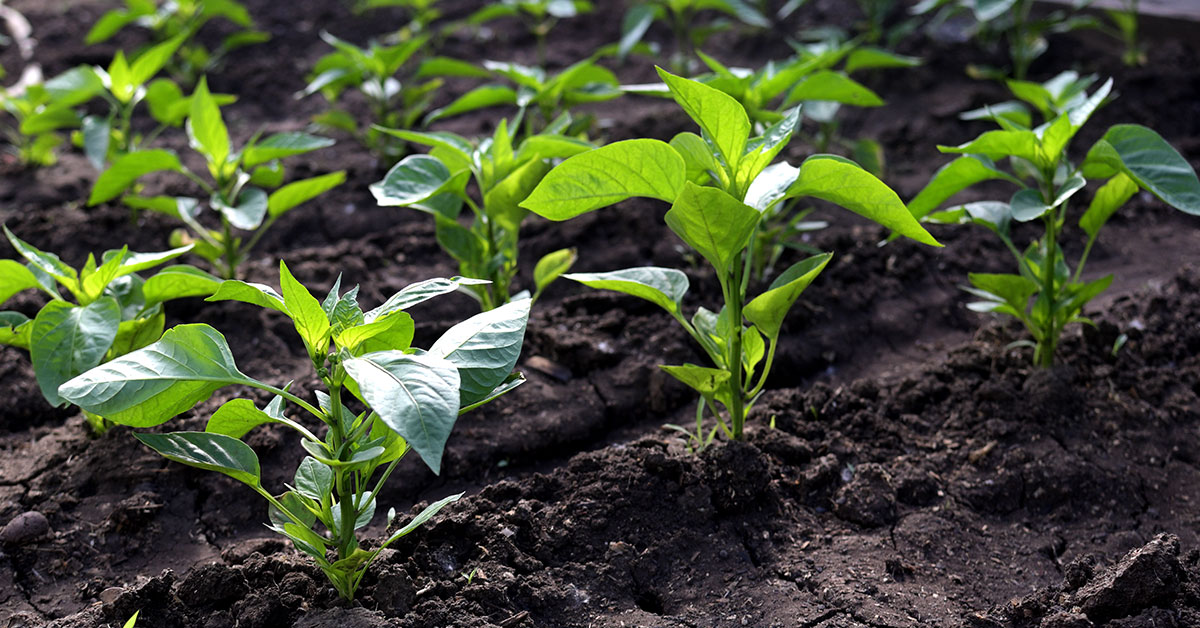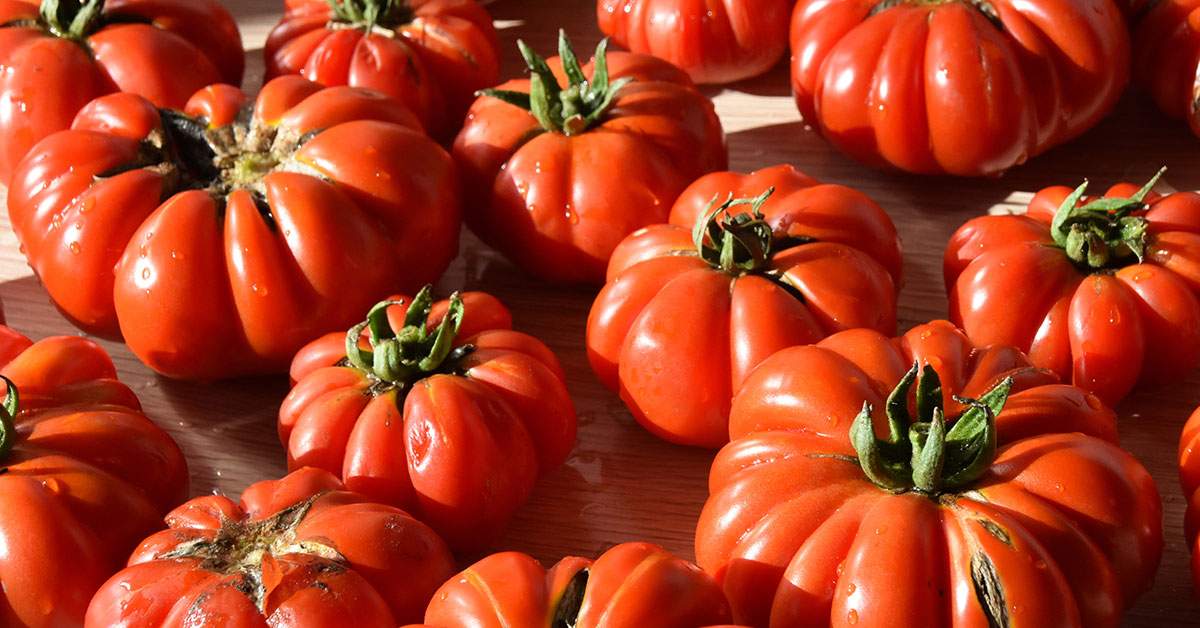Pasilla peppers are a popular ingredient in Mexican cuisine, known for their rich, smoky flavor and mild heat. Also known as chile negro, the pasilla pepper plant is a member of the species Capsicum annuum, which includes a wide variety of peppers ranging in heat levels and flavor profiles.
While pasilla peppers are often used dried, they are also used fresh in a variety of dishes, from salsas to soups to marinades. In this post, we will explore the history, growing conditions, and culinary uses of the pasilla peppers.
What is a pasilla pepper?
Pasilla peppers, also known as chilaca peppers, are a type of chili pepper commonly used in Mexican cuisine. The name “pasilla” comes from the Spanish word for “little raisin,” as the dried peppers have a wrinkled, raisin-like appearance.
The pasilla pepper is a member of the Capsicum annuum species, which also includes bell peppers, jalapeños, and cayenne peppers. The plant typically grows to be two to three feet tall and produces long, slender peppers that measure 6-8 inches in length. When fully ripe, the peppers turn a dark, almost black color.
Pasilla peppers have a mild to medium heat level, ranging from 1,000 to 2,500 Scoville units. They have a slightly sweet and smoky flavor with notes of chocolate and raisins. Additionally, they are often used in Mexican sauces, stews, and mole recipes.
They are relatively easy to grow and can be grown in containers or in the ground. It prefers well-draining soil and full sun, and requires regular watering. The peppers can be harvested when they are green or left on the plant to ripen to their dark, almost black color. When fully ripe, the peppers can be harvested and dried for later use.
What do pasilla peppers taste like?
The pasilla pepper is a popular chili pepper plant that is widely cultivated in Mexico and other parts of the world. A mature pasilla pepper plant can grow up to 3 feet tall and produces elongated, dark green peppers that turn a deep brown color when ripe.
The pasilla pepper plant is known for its unique flavor, which is often described as earthy, smoky, and slightly sweet. It has a medium heat level, ranging from 1,000 to 2,000 Scoville units, making it less spicy than other popular chili peppers like jalapenos and serranos.
When used in cooking, the pasilla pepper plant adds a rich depth of flavor to dishes. It is commonly used in traditional Mexican cuisine, particularly in sauces, stews, and soups. It pairs well with other ingredients like tomatoes, onions, garlic, and spices like cumin and oregano.
Overall, this pepper is a versatile and flavorful chili pepper that is a must-try for any fan of Mexican cuisine. It’s unique taste and medium heat level make it a great option for those who want to add some depth to their dishes without overwhelming their taste buds with too much spice.
How to start pasilla pepper plantseedsHow to Start Pasilla Pepper Plant from Seed
Pasilla peppers are a type of chili pepper commonly used in Mexican cuisine. They have mild to medium heat and a rich, smoky flavor that is perfect for making salsas, sauces, and stews. If you’re a fan of pasilla peppers, you may want to try growing them in your garden. Here’s how to start pasilla peppers from seed:
- Choose the Right Time to Plant: Pasilla peppers are a warm-season crop, so it’s best to start them indoors about 6-8 weeks before the last frost date in your area. This will give them time to grow and mature before transplanting them outside.
- Gather Your Supplies: You will need a seed-starting tray, seed-starting soil mix, pasilla pepper seeds, and a plastic cover or plastic wrap to keep the moisture in.
- Prepare Your Soil: Fill your seed-starting tray with seed-starting soil mix, leaving a little bit of space at the top. Dampen the soil with water, but don’t make it too wet.
- Plant Your Seeds: Plant two to three pasilla pepper seeds in each cell, about 1/4 inch deep. Cover the seeds with soil and gently press down.
- Cover Your Tray: Cover your tray with a plastic cover or plastic wrap to keep the moisture in. Place your tray in a warm, sunny spot, such as a windowsill.
- Water Your Seeds: Keep your soil moist but not too wet. Water your seeds whenever the soil feels dry to the touch.
- Wait for Germination: Pasilla pepper seeds usually germinate in about 7-14 days. Once your seeds have germinated, remove the plastic cover or plastic wrap.
- Provide Adequate Light: Your pasilla pepper seedlings will need plenty of light to grow healthy and strong. If you don’t have a sunny window, you can use grow lights or fluorescent lights.
- Transplant Your Seedlings: Once your pasilla pepper seedlings have grown to about 4-6 inches tall and have a few sets of leaves, they are ready to be transplanted outside. Choose a sunny location with well-draining soil.
How to grow pasilla peppers
Pasilla peppers are a popular type of chili pepper that is commonly used in Mexican cuisine. These peppers are known for their rich, smoky flavor and mild heat. If you love cooking with pasilla peppers, you might want to consider growing your own pasilla pepper plant at home. Here are some tips on how to grow a pasilla pepper plant:
- Start with the right soil: Pasilla pepper plants prefer well-draining soil that is rich in organic matter. You can create a suitable soil mixture by combining equal parts of potting soil, compost, and perlite.
- Choose a sunny spot: Pasilla pepper plants require plenty of sunlight to grow and thrive. Choose a spot in your garden or on your balcony that gets at least six hours of direct sunlight each day.
- Plant the seeds: You can start pasilla pepper plants from seeds or from seedlings. If you’re starting from seeds, sow them in a small pot or tray filled with the soil mixture. Cover the seeds lightly with soil and keep the soil moist until the seedlings emerge.
- Water regularly: Pasilla pepper plants need to be watered regularly, but you should avoid overwatering them. Water the plants deeply once a week, or more often if the soil feels dry to the touch.
- Fertilize occasionally: You can fertilize pasilla pepper plants with a balanced fertilizer every two to three weeks. Be sure to follow the instructions on the fertilizer package carefully.
- Watch for pests and diseases: Pasilla pepper plants are susceptible to aphids, spider mites, and other pests. Keep an eye out for any signs of infestation, and treat the plants promptly if you notice any problems.
When and How to Harvest Pasilla Peppers
If you have grown pasilla peppers in your garden or farm, you might be wondering when the best time to harvest them is. They are known for their slender, glossy, dark green, and long pods. They are commonly used in Mexican cuisine to add a rich and smoky flavor to dishes like mole sauce, chili, and tamales. Here are some tips on when and how to harvest your pasilla peppers:
The right time to harvest pasilla peppers depends on the level of ripeness you desire. If you prefer a milder flavor, you can harvest the peppers when they are still green. However, if you want a spicier and more flavorful taste, you should wait until the peppers have matured and turned dark brown or almost black.
In general, pasilla peppers take about 80-90 days to mature from the date of planting. You can start harvesting them as soon as they reach the desired size and color. You can also leave them on the plant for a little longer if you want them to get even darker and spicier.
How to Harvest Pasilla Peppers
The best way to harvest pasilla pepper plant is by using pruning shears or scissors. You should cut the peppers off the plant, leaving a small stem attached to the fruit. This will help to prevent damage to the plant and ensure that the peppers stay fresh for longer.
Once you have harvested the peppers, you can store them in a cool, dry place for up to a month. You can also freeze them for later use. To do this, simply wash and dry the peppers, remove the stem and seeds, and place them in an airtight container or freezer bag.
In conclusion, harvesting pasilla pepper plant can be a fun and rewarding experience. With the right timing and technique, you can enjoy a bountiful harvest of delicious and flavorful peppers that can be used in a variety of dishes.













